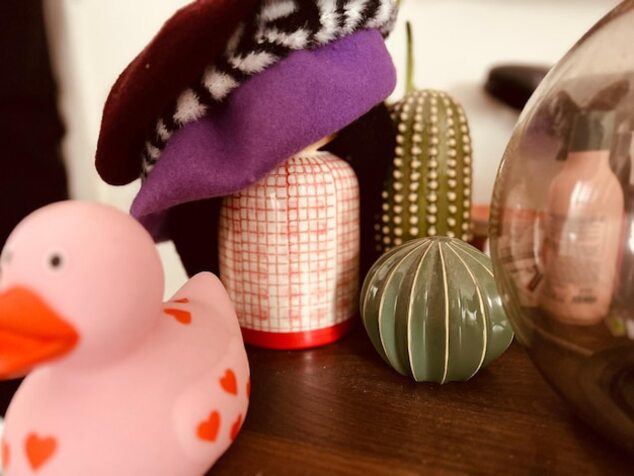Create a dynamic home that evolves with your emotions.

Create a space that reflects who you are and how you feel. A dynamic home is not just about furniture and decor, but about an environment that adapts to your changing emotions and needs. In this article, you will discover how to transform your house into a sanctuary that evolves with you, allowing every corner to tell your personal story. You will learn to use design, colors, and decorative elements to create an authentic home that inspires well-being and emotional satisfaction.
The importance of emotional connection at home
Emotional connection at home is essential for creating a space that is not only functional but also comforting. When an environment reflects our emotions and experiences, it becomes a refuge where we can be authentic and find peace. Every object, every color, and every arrangement of furniture can evoke memories and feelings, making our home feel like an extension of ourselves. An environment that fosters this connection can positively influence our mood, helping us face daily challenges with greater resilience.
By allowing our emotions to guide the design of our home, we promote a sense of belonging and stability. The conscious choice of decorative elements that resonate with our personal experiences can transform cold and impersonal spaces into warm and inviting places. For example, including family photographs or pieces we have collected during trips not only beautifies the home but also reminds us of who we are and what we value. This personalized approach helps create a dynamic atmosphere that evolves with us, adapting to our emotional changes and celebrating our personal history.
2. Colors that Transform: The Psychology of Color in Interior Design
The psychology of color plays a fundamental role in interior design, as each hue evokes specific emotions and sensations. For example, blue tones can convey calmness and serenity, making them an excellent choice for rest areas like bedrooms or meditation rooms. On the other hand, warm colors like red or orange can infuse energy and vitality into common areas, encouraging social interaction and creativity. By carefully choosing the colors of your spaces, you can directly influence your emotional state and create an environment that aligns with your current needs.
Additionally, it is important to consider how natural light can interact with the chosen colors. The same shade can look completely different depending on the lighting, highlighting the importance of conducting tests before making final decisions. Incorporating different nuances within a harmonious palette can also add depth to a space, allowing it to feel more dynamic and welcoming. In this sense, it's not just about selecting colors that you aesthetically like; it is essential to think about how those colors will affect your daily well-being and contribute to the ongoing evolution of your home as a reflection of your emotions.
3. Flexible spaces: versatile furniture for an active life
Flexible spaces are essential for a dynamic home, as they allow adaptation to different activities and lifestyles. Choosing versatile furniture, such as modular sofas or extendable tables, offers the possibility to reconfigure the environment according to current needs. For example, a living room can easily transform into a workspace during the day and into a cozy gathering place in the evening. This type of furniture not only optimizes space usage but also encourages creativity and social interaction, reflecting an active and ever-evolving life.
The choice of multifunctional pieces is key to maximizing functionality without sacrificing style. A bench with hidden storage or a foldable bed can be ideal solutions for those looking to make the most of every corner of their home. By integrating these elements into your interior design, you can create areas that serve multiple purposes without losing aesthetic harmony. Furthermore, by choosing furniture that adapts to different uses and combinations, you are fostering an environment where each day can be unique, allowing your emotions and experiences to manifest in the space you inhabit.
4. Natural elements: how nature influences our mood
Natural elements, such as plants, stones, and wood, have a significant impact on our emotional well-being. The presence of nature in the home not only adds aesthetic beauty but also creates a relaxing and revitalizing environment. Studies have shown that incorporating natural elements can reduce stress and increase feelings of happiness. For example, plants not only purify the air, but their vibrant green color and active life connect us with the very essence of nature, reminding us of the calm and balance it can provide.
Additionally, using natural materials like wood or stone can bring a unique warmth to your space. These materials evoke feelings of solidity and stability, contributing to a cozy and secure environment. By integrating these elements into your decor, you can create specific areas intended for moments of relaxation or meditation. Imagine a corner filled with natural light with a comfortable chair surrounded by plants and adorned with organic textures; this space becomes your personal refuge where you can disconnect from the outside world and reconnect with yourself. Thus, natural elements not only beautify your home but also play a crucial role in managing your daily emotions.
5. Aromatherapy at home: fragrances that enhance your well-being
Aromatherapy is a powerful tool for creating an environment that is not only welcoming but also fosters your emotional well-being. Fragrances can evoke memories, stimulate sensations, and alter our mood in subtle yet significant ways. For example, the scent of lavender is known for its relaxing properties, ideal for those moments when you need to unwind after a hectic day. On the other hand, citrus scents like orange or lemon bring energy and freshness to your home, perfect for maintaining a cheerful and lively atmosphere. Incorporating essential oil diffusers or scented candles in different spaces can help you personalize each corner according to your emotional needs of the moment.
In addition to their aesthetic function, fragrances can be strategically used to enhance productivity and concentration in areas dedicated to work or study. Mint and rosemary are stimulating aromas that promote mental clarity and can be especially useful in a workspace. By adapting fragrances to each area of your home, you can create a complete sensory experience that resonates with your daily emotions. Remember that you can also experiment with customized blends; combining different essential oils will allow you to find the perfect synergy that boosts your well-being and contributes to a harmonious environment where you can truly feel like yourself.
6. Create calm zones: corners for meditation and resting
Creating calm zones in your home is essential for fostering an environment of serenity and well-being. These corners dedicated to meditation and rest should be designed with elements that connect you to tranquility, such as soft cushions, cozy blankets, and gentle lighting. Consider including plants that purify the air and bring life to these spaces, as well as objects that inspire you, such as books or scented candles. The key is to choose a place where you can disconnect from the daily hustle and bustle, allowing your mind to relax and recharge.
In addition to decorative elements, it is essential to pay attention to colors and textures in these calm areas. Opt for soft color palettes like light blues, pastel greens, or warm neutrals that invite inner peace. Natural textures, such as wood or linen, can also help create a cozy atmosphere. Don’t forget to personalize this space with photographs or meaningful mementos that evoke happy moments; this will not only make it unique but also enhance your emotional connection to it. A well-designed corner for meditation and rest can become a personal refuge where you find balance and harmony amid the chaos of daily life.
7. Art as personal expression: decoration that tells your story
Art is a powerful tool for personal expression that can transform any space into an authentic reflection of who you are. Each piece you choose to display in your home, whether it’s a painting, a sculpture, or a photograph, tells a unique story that intertwines with your experiences and emotions. By selecting artworks that resonate with you, you not only beautify your surroundings but also create a visual dialogue that invites introspection and emotional connection. This type of decoration not only adorns the walls; it acts as a mirror of your life and passions, turning each room into a tangible testament of your personal journey.
Incorporating art into your home allows you to explore different styles and techniques that reflect your emotional stages. A vibrant painting can evoke joy and energy, while a minimalist sculpture can bring serenity and calm. Additionally, art doesn't have to be expensive or conventional; you can choose handmade works by yourself or by friends, which adds an even deeper level of meaning. The key is to surround yourself with pieces that inspire you and connect you to your deepest feelings, creating a dynamic environment where every corner reminds you of who you are and how you feel at every moment in your life.
8. Proper lighting: how light affects our emotions
Lighting is a key factor in creating a home that evolves with our emotions. Natural light, for example, can elevate our mood and increase our productivity, while soft, warm lighting can provide a relaxing environment ideal for moments of calm and reflection. By selecting different types of lights, from LED bulbs to table lamps with dimmers, we can modify the atmosphere of each room according to what we need at that moment. Thus, by adjusting the lighting to our emotions of the day, we transform not only the physical space but also how we feel in it.
Additionally, the colors of light play a fundamental role in our emotional perception. Cooler tones can promote concentration and energy, perfect for spaces like offices or studios; while warmer lights invite tranquility and rest, ideal for bedrooms or social areas. Considering these aspects when planning the lighting of our home allows us to create environments that are not only functional but also promote emotional well-being. Just as every corner tells a personal story, the way we illuminate these spaces can have a lasting impact on our mental and emotional state.
9. Integration of technology: smart solutions for an adaptable home
The integration of technology in the home has revolutionized the way we interact with our living space. Smart solutions, such as adjustable lighting systems and programmable thermostats, allow each area to adapt to our emotions and preferences. Imagine an environment where the light gently dims as evening falls or where the temperature automatically adjusts to create a cozy atmosphere after a long day. These innovations not only enhance our comfort but also contribute to an environment that reflects who we are at different times of the day.
Moreover, smart technologies go beyond functionality; they can be powerful tools for fostering emotional well-being. For example, smart speakers can play relaxing music or nature sounds at just a request, helping to relieve stress and promote a sense of calm. Connected devices also allow for the personalization of the home experience according to our daily routines and moods, creating an adaptable sanctuary that evolves with us. By integrating these technological solutions into our homes, we are not only creating a more efficient space but also one that nurtures our mental and emotional health.
10. Periodic renovations: keeping your space fresh and relevant
Periodic renovations are essential to maintain a home that feels fresh and relevant. As our lives change, so do our aesthetic preferences and functional needs. Taking the time to review and update your space can not only revitalize the environment but also allow you to reflect on who you are at each stage of your life. From changing the arrangement of furniture to experimenting with new colors on the walls, each small transformation can have a significant impact on how you feel within your home.
Incorporating new elements or redesigning specific areas of your home offers you the perfect opportunity to express yourself and maintain an emotional connection with your surroundings. You can choose to renovate an entire room or simply add decorative details that highlight your current emotions. Furthermore, these renovations don't have to be expensive; often, small changes like adding plants, new art, or fresh textiles can work wonders to revitalize the space. In this way, every corner of your home continues to narrate the story of who you are and how your life evolves.



